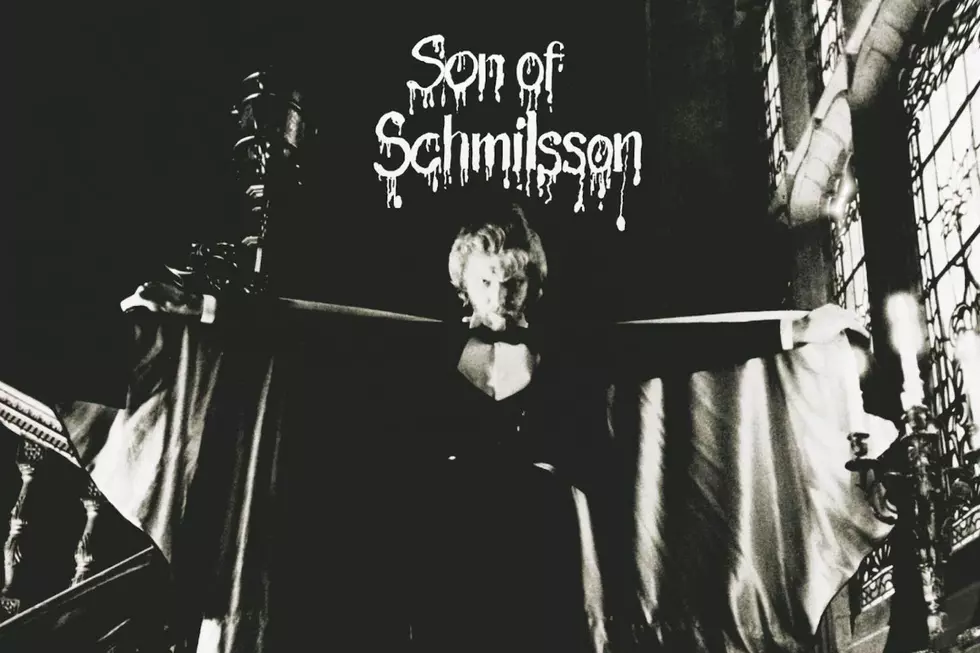
50 Years Ago: Harry Nilsson Steers Toward the Ditch on ‘Son of Schmilsson’
Harry Nilsson's long-awaited breakthrough with the gold-selling Top 5 smash Nilsson Schmilsson had his record label hoping for a sequel. Based on the title, it seemed like he'd delivered one on July 10, 1972.
But this was Harry Nilsson. Instead, the guest-packed Son of Schmilsson arrived as an eccentric oddity, something that might only have been possible in the free-form decade in which it was made.
"My approach would have been to just pick up where Nilsson Schmilsson left off," producer Richard Perry said in the liner notes for a Son of Schmilsson reissue. "Typically brilliant Nilsson vocals, songs that maintained our artistic integrity but at the same time had great commercial value. If Nilsson Schmilsson was our Revolver, [let's] make Son of Schmilsson our Sgt. Pepper."
Only Nilsson felt like he was in a trap of his devising. "By repeating the formula, you can correct it, make it better and get rid of all the chaff," he allowed back then. "But on the other hand, you run the risk of grinding the formula into the ground by repeating it and letting it become just a formula. It's scary."
Ultimately, there was no danger of that happening on Son of Schmilsson. Even its most approachable song, "You're Breakin' My Heart," was commercially dead on arrival, despite a backing group that included George Harrison, Klaus Voormann, Peter Frampton and Nicky Hopkins. There was some question at RCA about whether to even include the track after Nilsson took a stunning lyrical turn: "You're breakin' my heart, you're tearin' it apart – so, fuck you."
"He sat down and very nicely starts playing this song, and everyone's paying attention and then he gets to 'So, fuck you," Frampton said in the liner notes to the reissue. "I mean, we were just not expecting that! It was a big shocker."
Listen to Nilsson's 'You're Breakin' My Heart'
This wasn't creative license on Nilsson's part, as he was going through a divorce. In keeping, a sense of sad displacement tends to permeate Son of Schmilsson, even as Nilsson tumbles into the bottom of a liquor bottle. He rages at his isolation on the opening "Take 54" ("I sang my balls off for you, baby ... but when I woke up I was alone"), then becomes untethered from gravity on the No. 23 hit "Spaceman."
"I don't quite understand to this day why [the divorce] hit him so hard, but he maybe interpreted it as some failure in him," Perry said in 2013's Nilsson: The Life of a Singer-Songwriter. "It was to begin what was a downward spiral for the rest of his life. He would show up to the studio with a half bottle of cognac. The first half had already been consumed that afternoon."
"Remember (Christmas)" leans predictably toward the maudlin, as Nilsson laments that "love is only in a dream." "Joy" is, of course, about anything but. "Turn On Your Radio" better balances his pain and desolation, but subsequent titles like "I'd Rather Be Dead" and "Ambush" are more in keeping with the general narrative tone here. An impish cover of the El Dorados' "At My Front Door," with its blithe undertones of infidelity, completes the picture.
"The guy was able to paint a picture of despair or melancholy and he did it very well, economically," Nilsson collaborator Van Dyke Parks later told Pop Matters. "He could do all of that in a song. I think that it was an amazing combination, to be able to deliver sentimentality and a sense of irony." The principal element that keeps Son of Schmilsson from stepping off the ledge is its fizzy musical schizophrenia.
Listen to Nilsson's 'The Most Beautiful World in the World'
"Take 54" emerges as a kind of shag-carpeted funk, while "Remember (Christmas)" is simply angelic and "Joy" delightfully cornpone. "I'd Rather Be Dead" concludes with a raucous singalong featuring retirement-home residents. (One of them had a squeaky wooden leg, requiring a new take.) "The Most Beautiful World in the World" ends things with a mind-blowing amalgamation of every great and every incredibly indulgent impulse Harry Nilsson ever had.
And that may be the fairest assessment of Son of Schmilsson: It finds an artist in the wild, fully free – with all of the pluses and minuses that entails.
"There was a great deal of subtlety in his work," Parks argued. "And I think that that wasn't lost on the casual observer then. But I think that it's also part of the structure that keeps it upright and available and enjoyable today. It took some courage to get that kind of authorship and character in a song form that wasn't an easy thing to merchandise at the time."
In between, there's copious burping, weird studio chatter and B-movie sound effects. It's that kind of record. So, Nilsson was able to sneak up to No. 12 on the Billboard chart, but undoubtedly only because of early sales to new fans of his preceding, far more mainstream LP.
Something was unfortunately lost along the way: Son of Schmilsson didn't end up as Nilsson and Perry's Sgt. Pepper. Despite a spoken-word assurance at the end of "The Most Beautiful World in the World" ("Goodbye, Harry"; "See you next album, Richard"), this instead was their Let It Be.
Nilsson continued further down an uncommercial path with 1973's A Little Touch of Schmilsson in the Night, a standards album produced by Beatles associate Derek Taylor. Perry never worked with Nilsson again.




